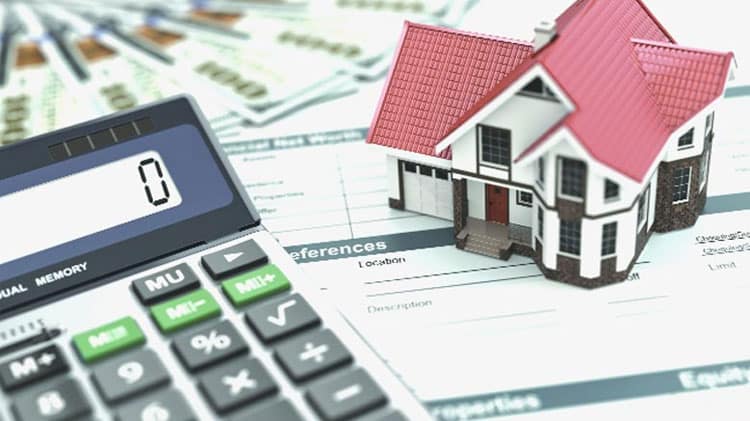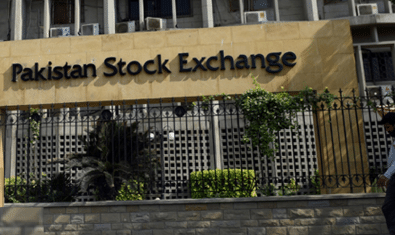The banks’ contribution to the development of housing and construction sectors has increased in the country as the size of their overall loans to the aforementioned sectors surged to more than Rs. 100 billion despite a steep hike in interest rates and high property prices.
According to the State Bank of Pakistan (SBP), bank financing of the housing sector has increased to Rs. 101.30 billion by end of June 2019 as compared to Rs. 88.18 billion recorded by the end of June 2018, showing a double-digit growth of 14.8 percent year-on-year.
Housing sector financing showed gradual growth as a league of banks, particularly Islamic banks and conventional banks have committed to tapping the real estate sector — a risky but profitable area of business.
It remained slow until 2014 due to higher interest rates, as the banks didn’t want to commit to this sector. However, the financing stepped up after 2015 increasing further in later years due to their facilitative attitude towards the customers and the persistent housing demand in the country.
| Financial Year | Loan Size |
| 2018-19 | Rs. 101.30 billion |
| 2017-18 | Rs. 88.18 billion |
| 2016-17 | Rs. 75.89 billion |
| 2015-16 | Rs. 65 billion |
| 2014-15 | Rs. 56.2 billion |
Source: State Bank of Pakistan
Banks’ Shares and Borrowers
The contribution of conventional banks to the housing sector stands at Rs. 46.39 billion whereas the Islamic banks’ contribution stands at Rs. 40.53 billion by end of June 2019. DFI’s contribution to the housing sector stands at Rs. 14.38 billion. The financing includes the purchase of the housing unit and its construction.
The banks reported 60,441 borrowers for house financing. A majority of borrowers received financing of up to Rs. 1 million. The borrowers of DFIs were 43,690. In this segment, the role of House Building Finance Company is prominent, which specializes in housing loans in the country, supporting its customers in purchasing a new home, replacing an old one and the construction of a housing unit.
Over 11,000 borrowers have taken loans from various banks, ranging from Rs. 1 million to Rs. 5 million. The housing finance facility of above Rs. 5 million was received by over 7,000 customers from various banks.
The number of customers availing loans from conventional banks and Islamic banks stands at 10,550 and 6,201 respectively despite their extensive advertisements and tall claims.
One of the reasons the number of borrowers is low is that non-performing loans’ ratio stands very high at 10.55 percent, which means over Rs. 10 billion of loans are in trouble.
Potential of Housing Finance for Banks
Despite achieving a historical mark of Rs. 100 billion on the account of house financing, the role of the banking sector is below its potential as House Building Finance Company and other DFIs contribute the most in this sector. The role of big banks is decreasing due to a hike in interest rates, particularly in the past two years, however there is a huge potential in the local market.
There is a deficit of 10 million housing units in Pakistan, which is increasing with time. The reason behind this is due to the rising population, urbanization and changing the living style from traditional combined family system to the nuclear family system.
New Initiatives and Developments
The government and the state organizations are working to address the basic needs of the masses by providing them with better financing options.
In this regard, a major development took place through the formation of Pakistan Mortgage Refinance Company last year. It signed an MoU of Rs. 4.8 billion with HBFC and four banks initially as World Bank will provide the funds.
The present government also announced some of the projects of Naya Housing Scheme in different cities under its target of 5 million houses for the public. The State Bank of Pakistan had also announced a special subsidized financing scheme for widows, children of martyrs, disabled citizens, etc. It also proposed a low-cost house financing scheme for the general public.
Moreover, Federal Board of Revenue (FBR) released a comprehensive list of property values for generating revenue which will not only control the price spiral in real estate but will also discourage the investment trend from property makers killing off competition in the property market.
More importantly, a Real Estate Regulatory Authority is on the cards as suggested by many banks and departments. This will connect all relevant departments of property transactions under one roof. This will not only make the process of property transactions much easier for the banks, but it will also reduce bribe-taking.
Major developments have taken place in Pakistan with an ecosystem which needs a kick start along with proper check and balance. Not only is the banks’ participation in the housing sector going to increase because of the prevailing high demand in the public, but it will also generate tremendous opportunities for businesses and employment at a local level in relevant sectors.






















Amazing not a single response/comment/compliments on this article. The key area is institutional financing in the real estate sector. The urban sector of Pakistan is now drawn by the builders which are raising high rise complexes in urban areas creating serious issues of traffic jams, water, sewerage, parking, due to shopping malls, gathia shops, gathia boutiques, frangrance/fart shops, etc.,